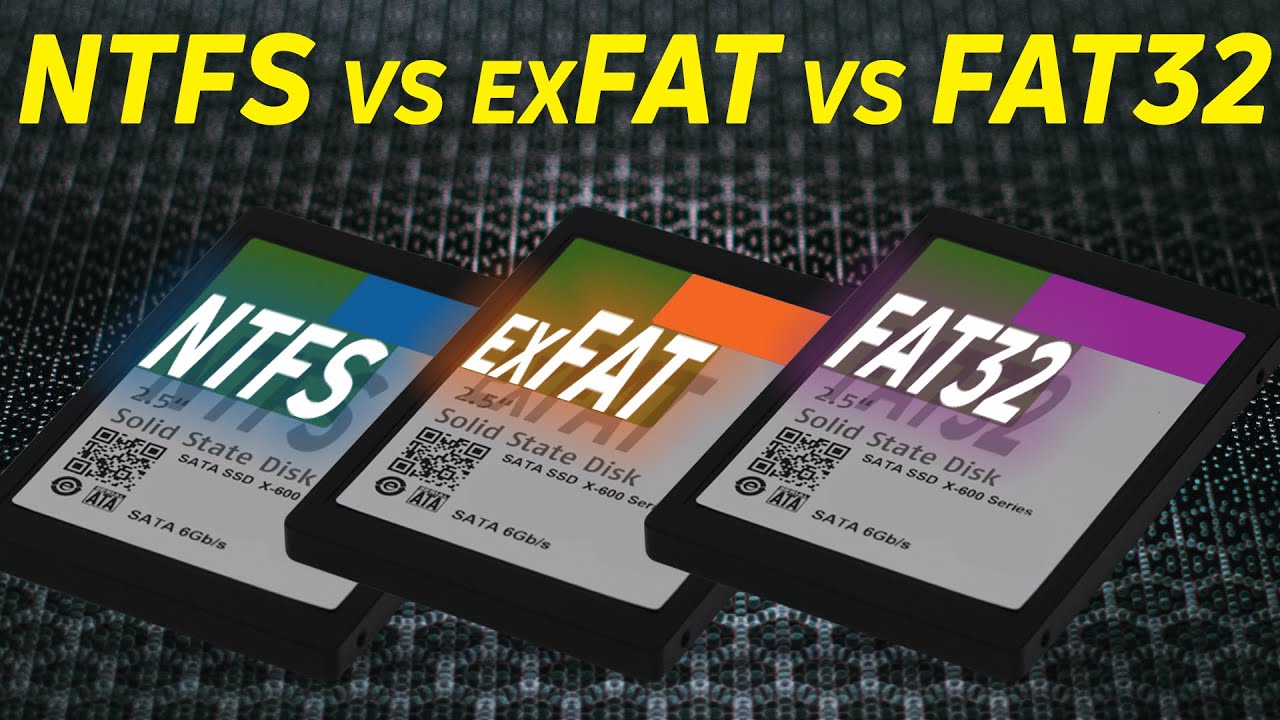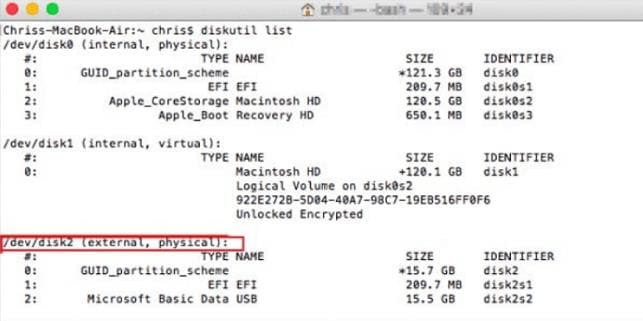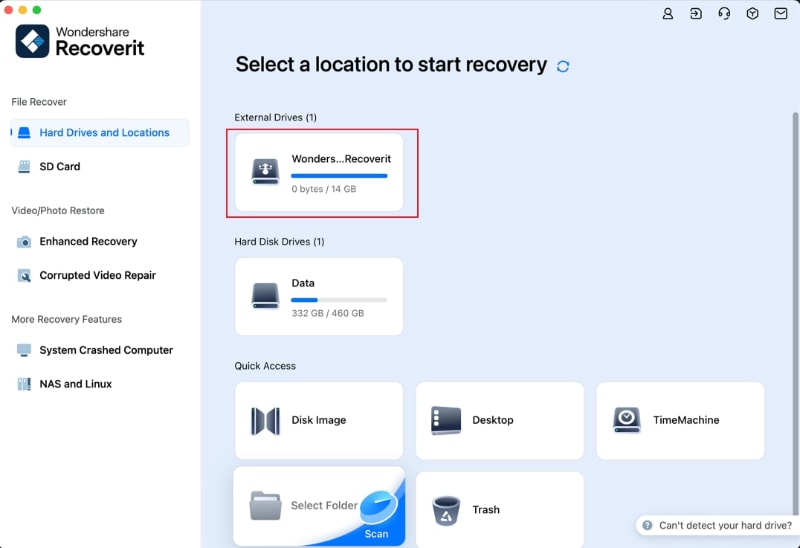Whether you're setting up a new disk or trying to make an old one compatible, choosing the right file system can seem technical and confusing. However, selecting the best format for an external hard drive on your Mac is a critical step that impacts its performance, compatibility, and reliability. This guide simplifies the choices—APFS, Mac OS Extended (HFS+), and ExFAT—so you can confidently pick the perfect format for your specific needs.
Table of Content
File System Formats That Are Compatible With Mac
Although macOS is a closed-source operating system that doesn't play well with third-party files and formats, it still supports a few well-known file systems. These include the following:
- HFS+ (Mac OS Extended Journaled): Also known as, is almost 25 years old today and works on Mac OS, Mac OS X, and macOS operating systems. It's a Mac-specific file system, meaning it's not supported on Windows and Linux machines, at least not without third-party software like Paragon HFS+ for Windows. Although Apple introduced APFS in 2017, many users still use HFS+ formatted devices.
- APFS (Apple File System): The transition to SSDs and their low prices led Apple to invent APFS in 2017, which they introduced alongside macOS High Sierra. Therefore, APFS works particularly well with SSDs and flash-based storage, leading to incredible speeds of up to a few thousand MB/s for internal drives. If you want to format an SSD for Mac, APFS is the first option. This file system is also Mac-specific and requires third-party software.
- NTFS: Windows-based NTFS file system isn't all that great on Macs. Third-party apps like Paragon NTFS for Mac are required if you want to write data to such drives, as macOS can only read data off of it natively. However, this file system has excellent encryption and compression.
- FAT32: Although it's arguably the most compatible file system, it has limitations. This format works well with Windows, Mac, and Linux computers but lacks in other areas. For example, it doesn't work for drives larger than 2 TB. It also can't support individual files larger than 4 GB.
- exFAT: Also known as FAT64, exFAT is a continuation of the FAT file system. The format is cross-compatible with both Windows and Mac computers and has no limitations of its predecessor, FAT32. It's ideal to use and partition drives for multiple modern operating systems.
Below is a detailed table comparison of the mentioned Mac file systems for your convenience:
| File Systems | Pros | Cons | Compatibility |
| HFS+ |
|
|
|
| APFS |
|
|
macOS 10.13 High Sierra or later. |
| NTFS |
|
|
macOS can natively access NTFS in read-only mode. |
| FAT32 | Compatible with Windows, Mac, and Linux. |
|
All macOS versions. |
| exFAT |
|
|
All macOS versions. |
Best Format for Cross-Platform Compatibility

If you're after a file system format that's compatible with more than just Macs, you have the following three options:
- NTFS has partial compatibility with Macs. Namely, Mac users can read files off an NTFS drive but can't write to it, requiring either an NTFS driver or third-party software like Paragano NTFS for Mac. Besides that, the file system is incredibly reliable, has excellent security, supports long file names, and is flexible regarding capacity allocation.
- FAT32 is highly compatible with many operating systems. However, since it's an older file system format, it has file-size and partition-size limitations, making it great for smaller USB flash drives but far from ideal for external multiple-terabyte hard drives.
- exFAT is based on FAT32 but removes the limitations that FAT32 had. It still lacks support for Time Machine backups and keeping track of permissions, but it is an excellent file system highly compatible with most OSs.
Therefore, it's evident that exFAT is the best cross-platform compatible file system unless you want to use the drive for Time Machine.
Best Format for Mac-Only Usage

Users who intend to use the external hard drive only for Mac needn't bother with cross-platform compatible file systems like NFTS, FAT32, or exFAT. Instead, HFS+ and APFS are a much better choice. Both are Mac-specific, bringing better read and write speeds, top-notch encryption, journaling, and more.
On the one hand, HFS+ is ideal for drives you intend to use with older macOS versions, such as macOS 10.12 Sierra and lower. For users with Fusion drives, HFS+ is the only choice, too.
On the other hand, users with newer machines, particularly those with solid-state drives and a macOS version 10.13 High Sierra and higher, should use the APFS file system. It's ideal for new Macs, providing incredible speeds, encryption, and snapshots.
It's worth noting there are some considerations when choosing between HFS+ and APFS. Although the relatively new APFS is better in almost every way, it doesn't support Fusion drives and doesn't play well with macOS versions older than High Sierra. In those cases, HFS+ is your best bet.
Things to Consider Before Choosing the Best Mac External Hard Drive Format Type
Formatting a device isn't something you typically do constantly, as it wipes all data from it. Therefore, before doing it, you must consider a few factors that will influence your choice of a file system. A incompatible file may cause that Mac won't recognize external hard drive. After all, you won't be formatting all the time. Here are a few vital elements to consider:
1. Drive Support
The type of your external hard drive matters a lot and for a reason. APFS was created with solid-state drives in mind, which is why it works best with flash-based storage devices and newer Macs.
Although it will work on hard disk drives and older devices, HFS+ is a better choice of file system in such cases. Moreover, APFS doesn't support Fusion drives, which some users might have.
2. How You Plan To Use the Drive
If your external hard drive is meant to work on Windows and Mac computers, APFS and HFS+ aren't the right choices. Instead, you should use file systems with cross-platform compatibility, like exFAT.
Time Machine compatibility is also a vital factor, as not all file systems support it, and it will influence how you partition the external hard drive.
3. Mac Version
The version of Apple's operating system plays a significant role in choosing a file system for both internal and external drives. For example, if you own an older Mac computer with a macOS Sierra or a previous version, APFS can become problematic.
For example, the relatively new file system has issues with encrypted volumes. On the other hand, the older HFS+ works on all versions of Mac OS X and macOS but has significant disadvantages mentioned above.
4. File Size
On top of the above factors, file size limits and encryption are also worth mentioning. For example, the FAT32 file system can't handle individual files larger than 4 GB and won't work well on hard drives larger than 2 TB.
How To Format Your External Hard Drive on Mac
Method 1. Set the Best Format For External Hard Drive on Mac Using Disk Utility
The easiest way to format an external hard drive on macOS is by using Disk Utility. Here's everything you should do:
- Connect your external hard drive to the Mac.
- Head into Applications > Utilities > Disk Utility.
- Select your external hard drive on the left side and hit Erase at the top.

- Name the device, choose the format, and hit Erase.

The formatting process only takes a few seconds, and your device will quickly be ready for files.
Method 2. Set the Best Format For External Hard Drive on Mac Using Terminal
The terminal command can be understood as the text input and output environment. It allows the users to enter commands for different computer processes. Hence, it facilitates the quick, easy, and accurate setting of the best format for external hard drive Mac. The detailed steps for the same are:
- Connect the external hard drive to the Mac
- Launch Spotlight by pressing CMD + Space.
- Type Terminal and press Enter.

- Type
diskutil listin the Terminal to identify the external hard disk (for example:/dev/disk2). - Then, use the
sudo diskutil eraseDisk FAT32 MBRFormat/ dev/ disk2command to format the external hard drive. - Type
diskutil listto confirm if the formatting was done correctly.

Here,
sudois the user's right-click diskutil call command.eraseDisk FAT32means format the disk to FAT32 and erase data.MBRformathelps disk utility to utilize Master Boot Record to format.dev/ disk2is the location of the external hard drive.
How To Recover Data From a Formatted External Drive on Mac
The formatting process deletes everything, wiping the drive clean and preparing it for future use. And since formatting hard drives is relatively easy, many users don't back up data beforehand, leading to data loss and deleted vital files.
Fortunately, Wondershare Recoverit – Hard Drive Recovery can make our lives easier, as they can quickly and efficiently recover formatted hard drive on Mac. Namely, Recoverit has a 95% success rate and works in numerous situations. Whether you've accidentally deleted files, formatted a drive without backing up first, or experienced a system crash that wiped your data, Recoverit has your back.
The recovery process is incredibly intuitive. Here's what you need to do if you've formatted an external drive without a prior backup:
- Download, install, and aunch Wondershare Recoverit on your Mac.
- Select Hard Drives and Locations on the left side and click on the external drive.

- The scan begins automatically and takes a few minutes, depending on the size of your external drive.

- Select and preview files while the scanning is happening. When you find the vital files or the scan completes, choose the files you wish to retrieve and hit Recover.

That's all you have to do. The process is straightforward and only takes a couple of minutes. On top of restoring files in situations where you've formatted the drive, the app will also work if malware and viruses, file transfer interruptions, or device power loss cause file deletion.
Conclusion
File systems determine how information is stored on a device. However, since various operating systems use different file systems, it's vital to format your storage devices according to your needs.
For an external hard drive, you can use a cross-platform compatible file system like NTFS, FAT32, and exFAT or Mac-only HFS+ or APFS if you intend to use the device exclusively on Mac machines.
Before formatting the device, it's vital to back up beforehand, as the process wipes all data off the device. However, in case you've already formatted the device without a backup, the only thing that can help is a data recovery app like Wondershare Recoverit.
FAQs About Best Format for Mac External Drive
-
Which format should I choose if I only use my external drive with Macs?
If your Mac runs macOS 10.13 or later, APFS (Apple File System) is the best HDD format for Mac. It's optimized for modern SSDs and flash storage but works well on traditional hard drives too. For older Macs, Mac OS Extended (Journaled), also known as HFS+, remains a solid choice. -
What is the best format for sharing an external drive between Mac and Windows?
ExFAT is the ideal format for this purpose. It is fully compatible with both macOS and Windows, allowing you to read and write files on either operating system without needing third-party software. It also supports large file sizes, making it great for video files or large backups. -
How do I format an external hard drive on a Mac without losing data?
You can't. The process to format an external hard drive on a Mac inherently erases all data on the disk. Before you begin, you must copy any important files from the external drive to your Mac or another storage device. Always double-check that you have backed everything up before proceeding. -
Will formatting my drive to APFS make it faster?
Not necessarily on a traditional hard disk drive (HDD). APFS is highly optimized for the speed of Solid-State Drives (SSDs). While it will work perfectly on an HDD, you might not see a noticeable performance increase. The main benefits of APFS are better space management, reliability, and security features.


 ChatGPT
ChatGPT
 Perplexity
Perplexity
 Google AI Mode
Google AI Mode
 Grok
Grok























